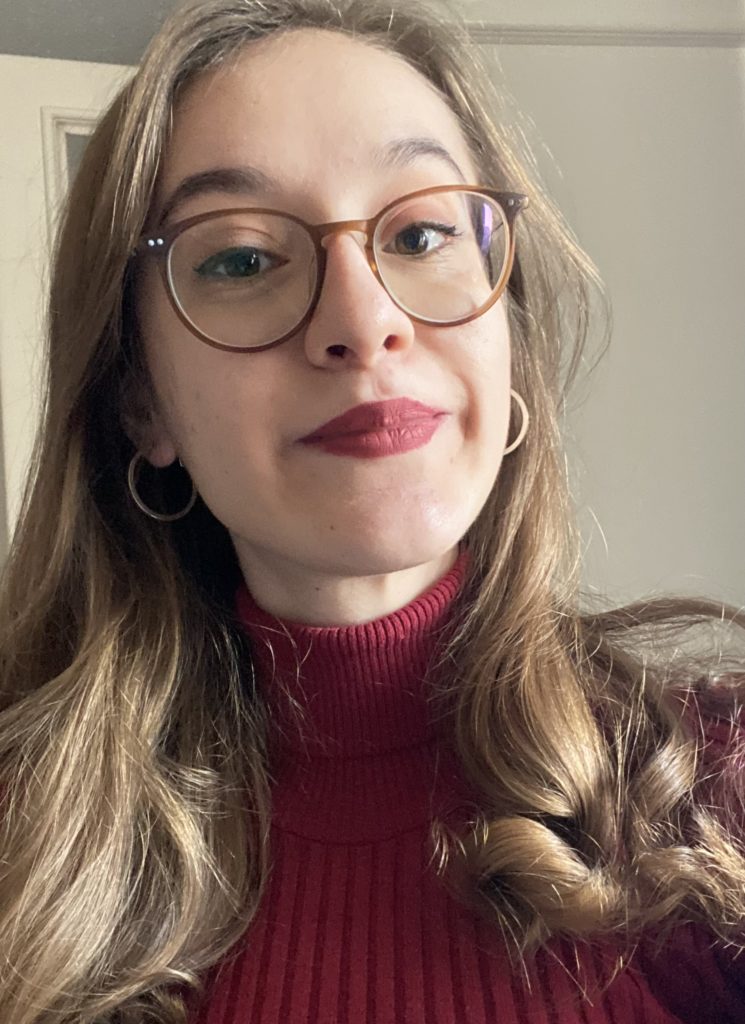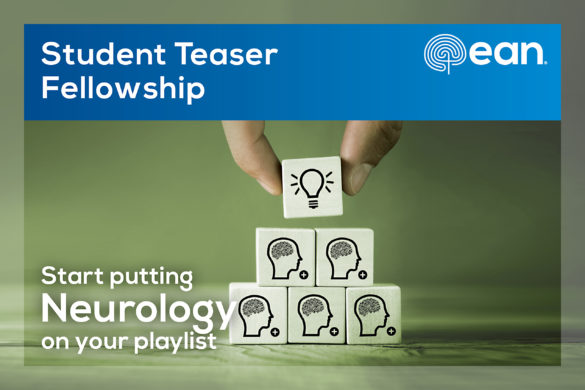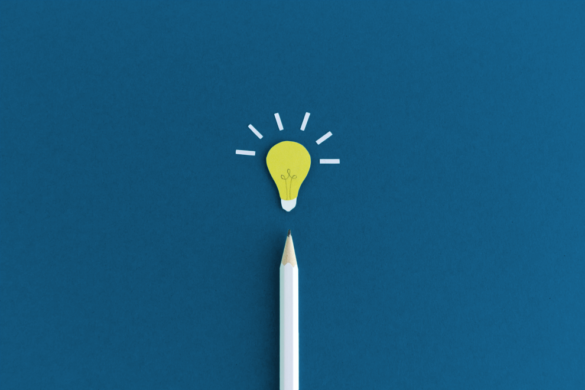Our 3rd Students’ Corner article submission is on the topic ‘My favourite part of the brain’. We received many excellent submissions, but the EAN Student Task Force managed to reduce the field down to four winners. Here we present the winning essays. Happy reading!
The Seahorse With the Ammon Horn
by Antonio Malvaso (Italy) – 6th year medical student
Imagine a parallel world made of memories, your own memories mixed with those of many others. But not quite all the memories. Only the most selected, the most daring, the most desirable of an ultimate goal hidden behind the taste of the horrid.
Imagine remaining brain activity after the cessation of thinking. An infinity of electrical signals capable of generating a living and lived surrounding universe.
Try to project yourself into a universe with expanded memories and in the hypothetical brain areas exploited by them.
Your space, your time, what happened, your future and in short, the memories of all this are reproduced into one structure. Like a forbidden dream locked up in a cage of idea hunters; an ocean of memories framed by a wall of ceasing thoughts.
Hands down! I can only refer to the hippocampus.
Memory is the basis of our identity. Memory that is not only strictly cerebral ideational content but all that we are, even the representation of each of our gestures, the procedures learned to carry out each of our daily acts, simple or complex. Even though life’s events occur over time, we frequently recall them in the context of an integrated narrative. The hippocampus is a lovely and complex structure that is essential for incorporating events into a narrative structure for memory.
The mind is memory. It has not memory, but is it; the memory constitutes it.
Too drastic? Alright, let’s clarify.
Time is for us our memory of time. A memory alive and active but also prone to errors and revisions: whenever we think back to something that happened maybe we lose a detail, we note another, sometimes we state differently. Being ourselves is to be a unique and unrepeatable collage, instant for instant, of the memory of what we have drawn from the world and from others.
Memory is also our distant giving oneself time: the depiction of past in memory, the reaction to present contextualising the information memorised motions, design of the future by seeking new relationships and possibility in the connection of our mental reserves. Everything lives in our modulation and proposition of the memory networks we activate to remember, decide, plan.
There, in the hippocampus, lives the time.
Memories are what we are, but creating memories is also a biological process.
Humans and other mammals have two hippocampi, one in each hemisphere of the brain. In rodents, the hippocampus is roughly the shape of a banana. In humans, it has a curved and convoluted shape, which inspired the image of a seahorse to the first anatomists. The hippocampus proper is the main component of the hippocampus; known as the Ammon’s horn, named after an ancient Egyptian deity with a ram-shaped head, due to its resemblance to a ram’s horn.
The memory processes are possible thanks to the concept of brain plasticity. Each event of our life produces changes to the structure or function of neurons, both temporarily and permanently. Events create new synapses between neurons, essentially remapping the brain. Within this fascinating structure, the creation of new synapses starts from a physiological process which, from the single electro-communication chemistry between neurons, leads to trial neurobiological data from activation of mechanisms of gene expression.
Therefore, our story is based on our memories. Some we have built, others have been handed down to us by our ancestors, from history books, but also from a song, a poem, a story, a postcard. When we read a book or listen to a song, the learning process and memorisation involves the role of the hippocampus. Future planning and remembering our position in space also depend on the human hippocampus. Indeed, when we talk about diseases that affect the hippocampus, such as Alzheimer’s or epilepsy, we often focus on memory deficits. We think of these diseases as those that make you forget who you are or where you are. But a real and important problem is the patient’s inability to plan their actions correctly.
The hippocampus is one of the few regions of the brain where new neurons are generated.
It is part of the limbic system, playing a key role in emotional reactions, behavioural responses, and smell. It creates mental maps of your surroundings. It accomplishes this through the use of place cells, which serve as anchors for the locations where significant events occur. It assists you in navigating your world by tracking your current location in relation to these anchor locations.
The hippocampus also creates maps of more abstract concepts including friendships and other relationships, and it labels these various relationships with the dominant emotions associated with them. It is a multifaceted structure that truly captures the essence of ‘you’. Our whole existence is somehow also due to this incredible brain area.
All this makes us continuously different and hopefully better.
We are memory.
That is why it is my favourite part of the brain.
The Brain is Wider Than the Sky
by Rishmita Thakur (India) – 3rd year medical student
As a child, who always loved drowning herself amidst various books, the quote “the brain is wider than the sky” quoted by Emily Dickinson in one of her novels, compelled my juvenile mind to ponder upon the complexities offered by this highly sophisticated and majestic organ. Just the thought that a single biological entity can work in millions of different ways enthralled and prompted me to dive deeper into knowing and understanding it.
It is flabbergasting that even in the 21st century, the so-called ‘era of modernization’ where we are aiming at robotic surgeries, nanotechnological advancements, artificial organ developments, and transplants, the brain remains the unknown frontier. Imagine being a meticulous worker fulfilling deadlines around the clock which are not just physiological in demand but also pathological, philosophical, psychological, and much more! In my understanding, for any person, may it be a well-versed professional or a new kid on the block, appreciating a particular brain region might be quite meticulous especially when each part of it holds its own charisma and purpose quite peculiar just to itself.
The so-called ‘smart controller of the body’, also known as the hypothalamus, appears to be quite fascinating to me. This tiny structure, which is about the size of a pea, is essential for maintaining several bodily homeostatic mechanisms. It serves as an illustration of how strength is determined by one’s consistency and perseverance towards their tasks and not their physical stature or build. The hypothalamus is one of the components of the diencephalon, aka the ‘inner magician’ which lies extremely deep into the prosencephalon and is comprised of four main sections referred to as the thalamus, subthalamus, epithalamus, and hypothalamus. The overall complexity and cheek-by-jowl roles offered by every component of the diencephalon make it quite difficult to assign unique accreditations to one of them. Resuming our focus on the hypothalamus, from an anatomical point of view, it sits in the inferior portion of the diencephalon where it also forms the inferolateral walls for the third ventricle. It lies between the optic chiasma anteriorly and the mammillary bodies posteriorly. Projecting inferiorly from the hypothalamus lies the ‘master gland’ of our body, aka the pituitary gland involved in the secretion of numerous hormones. The hypothalamus is a sheet of grey matter comprising various functional nuclei that designate it as the main visceral control centre of our body. What fascinates me the most are the arrays of functions offered by this little structure, which is not just involved in maintaining autonomic and thermodynamic control but also plays a crucial role in balancing emotional responses, circadian rhythm, memory, and much more. I find it rather perplexing how this tiny structure can assist you to make decisions about anything from when to eat your first meal to meet up for coffee with friends, ponder on some fondest of memories or lay your eyes to rest at the end of the day. Every time I reflect upon this rather whimsical part of the brain, I have a trail of poetic words flowing through my mind in the following fashion:
I am dazzling, shining, and very ingenious,
My aura is charming, and people are flattered by my brilliance;
I make choices and I help people work them out,
I am always open to processing any suggestions, emotions, compliments, and doubts!
My appearance intricate and my behaviour absurd,
So many researched but none completely conquered.
I am responsible for intricate machineries and I reflect on a multitude of things;
All you need to know is without me you are nothing!
Well, it might be a bit biased to give all credit to the hypothalamus, considering the brain has many more wonders to offer; but it is its complexity, preciseness, and jack-of-all-trades behaviour that draws me closer to liking it. I think for all the neuro-enthusiasts right from professionals to young students like me aspiring to seek a career in neurosurgery, the common binding factor between us is the fascination, curiosity, and love that we share for this mastermind organ, the brain! May it be its most inconspicuous part to the hugest one, the ways with which it functions would always surprise and continue to drive us towards understanding and exploring it. I would like to conclude my write-up by mentioning a wonderful quote, quoted by Dr Vijayalakshmi Ravindranath, a famous neuroscientist and my idol from India who once said, “Getting to know the brain is like a wonderful voyage, and once you become a part of that journey; there is no going back!”
The Bridge Between Two Hemispheres
by Ipek Duysak (Turkey) – 4th year medical student
The brain is the organ that originates our actions, our responses to the outside world, performs many important functions, such as regulating our heart rate or hormone release, and keeps us alive by performing many important vital activities such as these. We use our brain functions non-stop. We can do barely anything without using at least some of our current cognitive functions and every action we do requires millions of connections between different parts of the brain. At a high level, the brain can be divided into the cerebrum, brain stem and cerebellum. The cerebrum is the largest part of the brain. It includes the temporal, frontal, occipital and parietal lobes and each lobe controls specific functions.
For example, the frontal lobes are involved in motor skills, cognitive functions and speech, while the temporal lobes are involved in short-term memory, speech, musical rhythm and some degree of smell recognition. In addition, the cerebrum is divided into two hemispheres and these hemispheres are connected to each other by a nerve network called the corpus callosum.
The corpus callosum, which literally means tough body in Latin, is like a bridge between the two cerebral hemispheres. Basically, it allows the flow of information between the two hemispheres of the brain. While the left hemisphere of our brain controls the right half of our body, the right hemisphere controls the left half of our body. This is why the corpus callosum plays such a critical role. Damage to, or in some cases, surgical removal of the corpus collosum can result in very interesting neurological problems such as alien hand syndrome, also known as Dr Strangelove syndrome, a name which was influenced by Stanley Kubrick’s black comedy film. People with this syndrome typically experience one of their hands as alien and acting independently of their conscious will. Also, very occasionally, a person will be born without a corpus callosum. This is known as agenesis of the corpus callosum, and it causes a wide variety of physical and behavioural symptoms.
There are 200-250 million axons in the corpus callosum. The myelin sheath covering the axons significantly accelerates action potential conduction. This speed in the corpus collosum is more of a danger for people with epilepsy. When neuron firings increase unnecessarily, epileptic seizures are triggered and the patient enters a crisis state. In some patients, the condition becomes so severe that the patient may have seizures several times a day, and in this case the corpus callosum can be cut for palliative treatment of epilepsy, this is called callosotomy and if the entire corpus callosum is surgically cut, it causes a syndrome called split brain. While the right hemisphere is responsible for left hand and foot control, the left hemisphere is mostly responsible for the rational behaviour of the individual. These hemispheres, acting independently of each other, form a separate personality. To summarise, in split brain syndrome, all communication between the brain hemispheres ends and the hemispheres start to work only on their own. Dr Roger Sperry and colleague Michael Gazzaniga studied these split brain disorder patients for the first time in history. Their results later led to the work of Roger Sperry which received the Nobel Prize in Physiology & Medicine in 1981. Sperry received the award for his discoveries regarding the functional specialisation of the cerebral hemispheres. As a result of these studies, it has been discovered that the left side of the brain is dominant in analytical and verbal tasks, and the right side is dominant in visual and auditory tasks. Technologies developed later, especially after the 1990s, have revealed that the corpus callosum can indeed differ depending on gender. But this difference is not in the whole structure. Certain connections are more intense in males, while some other connections are more intense in females. However, whether there is any difference in the density and qualities of this connecting bridge between males and females is a matter of ongoing debate.
As a result, the corpus callosum is an incredibly important structural and functional part of our brain, and scientific neuroanatomy and neuroscience studies will show that the corpus collosum, like all the other amazing parts of our brain, has many functions that have not yet been discovered.
So Emotional
by Naida Salkovic (Bosnia & Herzegovina) – 5th year medical student
Whenever someone speaks about the human brain, I often feel lost in all the information we have so far about this organ. Likewise, I feel sadness and excitement because there is so much information that we still do not know and are yet to discover. If you go back to the previous sentence, you would correctly guess that I have an immense amount of love and interest for the human brain. Above all, I admire how our brain is able to process emotions, and emotions are the key to the fairytale of my favourite part of the brain.
Our story starts when Karl Friedrich Burdach, a physiologist from Germany, discovered the amygdala in 1822. Our protagonist is just over 1cm in size, but despite its size it plays a crucial part in learning, memory, behaviour, motivation and instincts.
When speaking about the amygdala, scientists have agreed on the following division of parts according to function:
Basolateral amygdala – receives sensory information, which arrives directly from the temporal lobe structures (primary auditory cortex and hippocampus)
Olfactory amygdala – group of subnuclei which has connections with bulbus olfactorius and nervus olfactorius
Centromedial amygdala – is mostly connected with the hypothalamus and medulla oblongata (brain stem), but also it has connections with the cerebral cortex, especially with the prefrontal cortex of the frontal lobe.
The first time I encountered this “nut” while reading a book, I was delighted with its role, and I still am. For Example, the connection with the sense of smell not only gives us information about our evolution from primates that used smell as legitimate and only valid input to fully intellectual beings. Further involvement in the function of the limbic system, and connections with the cerebral cortex show how important the amygdala itself is. And again, although it is connected to various parts of the brain, its strongest connection is with emotions, and of emotions, fear prevails in the amygdala. The irrational part of our brain, as many like to say, helps us survive by using already acquired experience and knowledge. I believe that almost everyone has heard about stress response, but only a few are aware that the amygdala is the one that sends signals to hypothalamus and triggers this response. Every organism reacts differently, and whether our response will be fight, flight, fawn or freeze depends on us, but what is certain is that by activating this physiological mechanism, the amygdala is responsible for keeping us alive.
For me, emotions are the meaning of life, they move us, they paralyse us and all this happens in seconds. Experiencing every emotion is magnificent and allowing them to ‘come to life’ and go through our body is something we need to learn. So, I can conclude = Corpus amygdaloideum, a small part of the brain, but it decides everything in our life.











